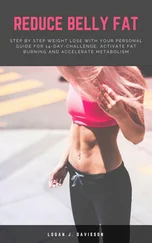It is particularly important that those affected recognise that they are suffering from a pathological addiction. This addiction is equivalent to an alcohol or drug addiction and must never be classified as less dangerous. Not only the insight that they suffer from shopping addiction, but and above all that they suffer from an addiction is central. The disease of addiction requires responsible self-management throughout one's life, which should be supported and supported by one's environment. Affected people need to understand that they are not addicted to a particular product such as clothing, but that they are buying as a kind of sedative or possibly stimulant to use.
Although shopping addiction is not a substance-dependent addiction, just like alcohol addiction, the brain does not work in favour of one's own health due to the out-of-balance release of hormones. The insight of being addicted to buying does not only include the knowledge itself. Understanding the dimensions of the problem is one of them. It may help those affected to become aware of the effects on the brain and to understand that the hormonal imbalance in the brain must be rebalanced. As with substance-dependent addicts, this process is usually lengthy.
First aid for buying addiction: How shopaholics learn to control themselves
Essentially, a step-by-step formula against buying addiction can be divided into three central steps. At the beginning there is the already extensively mentioned insight into buying addiction. Affected people must learn to understand their behaviour. This includes not only the admission, but already the next step: When do I want to buy? Am I bored right now or am I stressed or frustrated? Is there a system for my shopping attacks? If one's own behaviour becomes more transparent to oneself, the design of possible countermeasures is made much easier. The first important step is to make the person concerned aware of the consequences of his buying addiction, financially, psychosocially, interpersonally, and to recognize that there are emotional causes for buying addiction.
In second place is then the change in purchasing behaviour, for which the first aid measures listed here play a central role.
The third step is outside help. These should be a behavioural therapy, a self-help group and a debt counsellor. Friends and family or at least a confidant should be initiated in the best case already in the first step.
Although a pronounced addiction to shopping requires therapy, important measures in the fight against coercion can be found here. If you are aware of any tendencies of buying addiction yourself, you can also orient yourself to these practical first aid measures.
Treatment with medication makes little sense, as you have to work actively on purchasing behaviour. If shopping addiction is a side effect of depression or other mental disorder requiring treatment, treatment with medication may make sense in consultation with a psychiatrist and therapist. However, behavioural therapy is still recommended. The combination of application of first aid measures, behavior therapy and self-help groups are important steps out of shopping addiction. Such an overall treatment plan is recommended in severe cases.
Those affected should be aware that their shopping addiction is well treated, but can never be completely cured. There is a psychological tendency to get addicted and there is always the danger of relapse, especially when life situations become stressful. However, this realization is no reason to burrow one's head in the sand. If you stick to a few tips and tricks, you can learn how to deal with shopping addiction and lead a largely unrestricted life.
First aid measures
If the person concerned has come to the conclusion that he or she suffers from a buying addiction, first aid measures must be taken. Since a buying addiction is characterized by faulty money management, a lack of self-control and a high focus on material goods, most of these measures start at precisely these points.
This includes first and foremost dealing openly with one's illness and asking friends and family for support. If therapy discussions have already taken place, the partner or family should be initiated into the strategies and tactics against shopping addiction. In this way, relatives can actively help with the implementation. If the partner has little insight and even doubts the illness, he can come to a discussion with the therapist or participate in a meeting of the self-help group. If family support is completely eliminated, those affected should not be afraid to seek support from an addiction counselling centre. After all, support is one of the most important cornerstones for the successful implementation of first aid measures. Relatives should urgently avoid showering the person concerned with accusations, criticism or blame. Rather, they should be aware of the psychological vulnerability and lability and lovingly support you and not let accusations or "how could you let it get so far?!" sentences fall. The child has literally already fallen into the well, the affected persons are helped by active support that is oriented towards the future and does not repeatedly address the stressful feelings and events of the past.
Credit cards and cheque cards should be issued or blocked as a first measure and only cash payments should be made. Thus, those affected are compelled to be able to buy things only for the amount they carry with them. It is advisable not to let this amount be too high, but to take only the amount that is really needed for the purchase with you. In this way, the attitude to money is changed. External support should be sought for these steps so that this measure can be implemented without compromise. Those severely affected can, if the basis of trust permits, even hand over their finances to another person for a certain period of time. However, this should only be seen as a short-term measure, primarily for self-protection. The buying addict must finally learn a new buying behavior in the long run and should not be completely incapacitated from all financial things for an indefinite period of time. It is important to note that relatives should always treat those affected with respect and treat them at eye level. From the moment he asks for help, he is well aware of his problems and wants to be supported and not condemned.
Confrontation exercises in department stores can be helpful. Putting things aside before paying and leaving the store again without buying anything can be a measure that can counteract buying addiction. In this way, the affected person can learn to control his or her impulses and record his or her first small experiences of success. Usually the compulsion to buy something vanishes when the people concerned have resisted the atmosphere of the shopping malls or the pedestrian zone and were able to escape from the situation. From the point of view of behavioural therapy, these exercises are intended to counter-condition the previous behaviour.
If purchases have to be made that were previously the object of desire, those affected can first take a look at the product in the shop accompanied by an escort. The purchase itself should not be made until the next day, so that the person concerned can reconsider the purchase decision and become aware of the necessity of the product.
For everyday shopping, it helps to write a shopping list and meticulously adhere to it. It often helps to ask someone to accompany you when you are shopping, so that no deviation from the shopping list can take place. The creation of the shopping list should best be done with a trusted person who, in case of doubt, can question the necessity of a certain matter. The shopping list should not include things like "butter" or similar products. The brand and the quantity should be written down specifically. Thus the urge to "have a look" is completely suspended and shopping step by step is no longer perceived as a euphoric activity, but perhaps even as a nuisance.
Читать дальше












